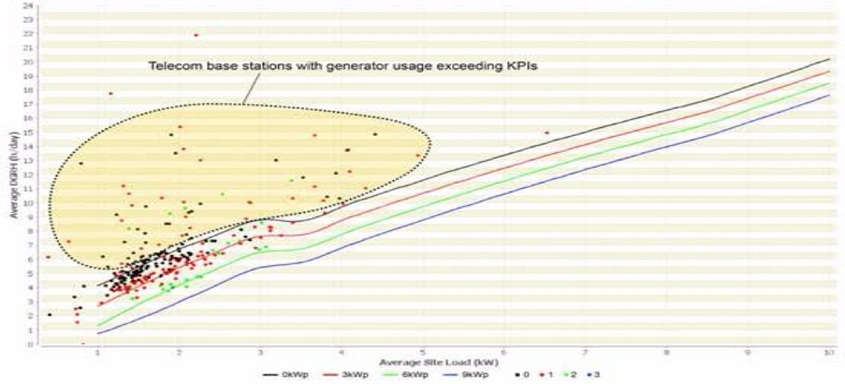Consumers in off-grid areas are rapidly increasing their use of mobile Internet services. At the same time they not only expect service to become more reliable, but they also want network coverage to expand and prices for mobile data plans to decrease too.
This is a big ask for mobile operators struggling to achieve base station profitability when they have no access to a reliable power grid. So what’s the solution?
Reliable hybrid power systems for cell sites (such as Flexenclosure’s eSite x10) that use one or more power sources with batteries for energy storage are the answer. In order to maximise base station profitability though, simply installing a hybrid power system will not be enough, as the only way to keep energy costs as low as possible is with access to detailed, reliable and centralised site data. Here are the top three uses for data to ensure the efficiency and effectiveness of a hybrid power deployment across a network of sites:
1. Reliable centralised tools and processes
Off-grid hybrid power systems for telecom sites need to perform 24/7, year-after-year with no or minimal downtime. At the same time batteries and generators are subject to aging, solar panels need cleaning, and even with the best will in the world mistakes are sometimes made during site maintenance.
To efficiently manage networks with hundreds or perhaps even thousands of telecom base stations, systematic and centralised tools and processes are needed. Reports and clear visual overviews are important to understand which sites are deviating from their key performance indicators (KPIs) and to accurately identify the actions necessary to rectify any problems.
Note that most KPIs will depend on several factors. Daily generator diesel consumption, for example, will be driven by both base station energy consumption and available energy sources (solar, unstable grid). So without reliable data from multiple sources and centralised tools to bring it all together, it is nigh on impossible to get both a good broad network overview as well as a detailed real time view of which bases station sites need attention.
And without that, the obvious risk is that sites are allowed to operate with sub-par performance over extended periods of time, seriously impacting profitability.
2. Accurate battery monitoring
Batteries make up a significant part of a telecom base station’s replacement capital expenditure. Reliable data to keep track of battery performance is important both to monitor target energy KPIs and to simplify warranty replacements in cases when batteries do not live up to signed agreements.
A typical battery warranty claim requires, among other things, non-disputable data on temperatures, total energy taken from the battery or charge-discharge cycles, and lowest state-of-charge levels. This data needs to be stored in an orderly manner and be easy to retrieve when needed for any given base station site.
New usage-based models like “battery-as-a-service” are interesting for many users that want to rest assured that batteries will perform over time. Other users may lack capital for investments in hybrid power systems and batteries, but be interested in business models where payments are made based on energy cost savings. Reliable, centralised data is key to implement such models and to ensure they work well over time.
3. Real time profitability optimisation
Great synergies can be obtained by combining off-grid base station power data with data from the active telecommunication equipment. Operators are already using tools for radio network optimisation to determine – in real time – how to best operate a network of base station sites, turning radio transmitters on and off in order to maximise revenues from 2G, 3G and 4G networks.
By combining such mobile network data with real-time data on the energy cost for each base station, it becomes possible to optimise network profitability in real time. For example, during periods when unstable power grids do provide consistent power, or during periods of high solar power generation, the cost of energy for a base station is lower than normal, which therefore changes the criteria for optimisation.
Reliable, centralised data is key to providing profitable telecom services in off-grid areas regardless of whether it’s for single operator base stations or shared telecom sites operated by tower companies. Hybrid power systems need to deliver on promises of low energy costs over the long run, whether batteries and generators are brand new or nearing the end of their useful lives – a challenge that again depends on the availability of reliable data.
Ultimately, the winning operators and service providers will be the ones that equip themselves with the tools necessary to leverage reliable data to truly optimise off-grid network operation and profitability.

Tomas Rahkonen is Chief Technology Officer & Vice President eCentre of Flexenclosure. Mr Rahkonen has more than 15 years of experience from global positions in the ICT industry, including roles at Ericsson and at Sony Ericsson.
He has filed several patents and been a member of the Sony Ericsson patent board. Mr. Rahkonen holds a Ph.D. in Industrial Control Systems from the KTH Royal Institute of Technology in Stockholm, Sweden. See www.flexenclosure.com




































